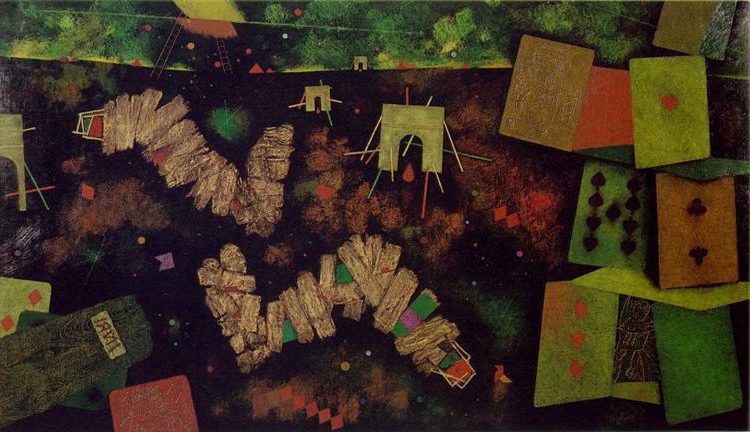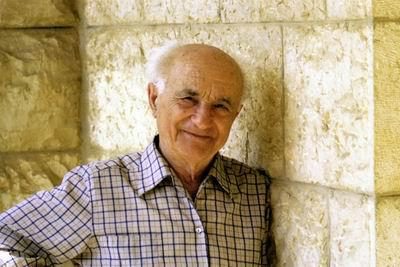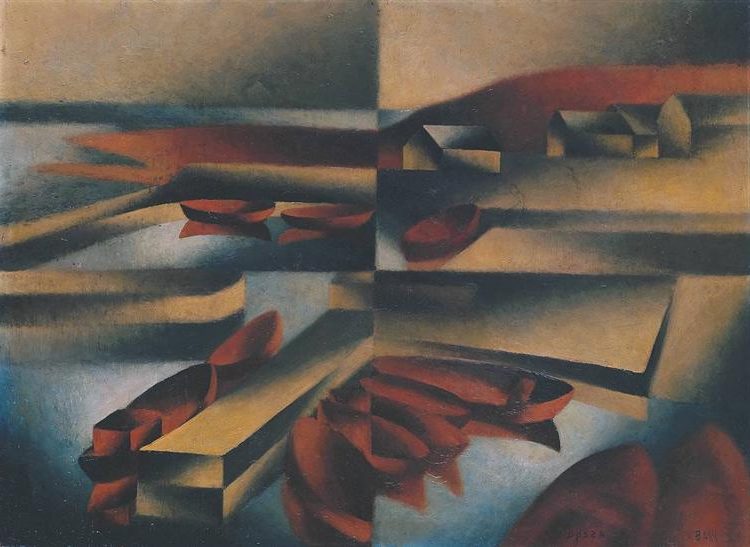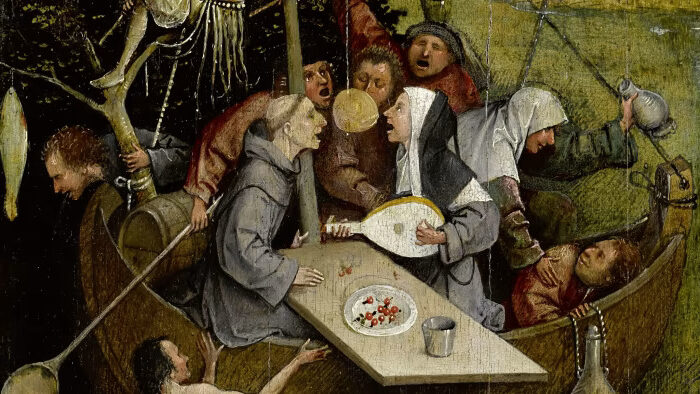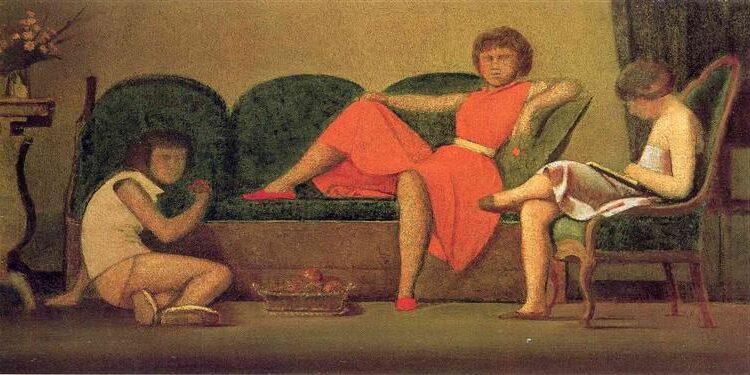Mordecai Ardon: Painter of Symbolic Expressionism in Israeli Art
Born: 13 July 1896, Tuchów, Poland
Death: 18 June 1992, Jerusalem
Art Movement: Surrealism
Nationality: Israeli
Teachers: Paul Klee, Wassily Kandinsky, Johannes Itten, and Lyonel Feininger
Institution: Bauhaus University, Germany
Mordecai Ardon: Painter of Symbolic Expressionism in Israeli Art
Life and Education of Mordecai Ardon
Mordecai Ardon’s journey from a small Polish town to becoming a renowned Israeli painter was shaped by his education and experiences across Europe and the Middle East.
Early Life in Tuchów
Mordecai Ardon was born as Max Bronstein on July 13, 1896, in Tuchów, Galicia, then part of Austria-Hungary. He grew up in a Hasidic family with 11 siblings. His father worked as a watchmaker, which later influenced Ardon’s art.

Composition with the Sun by Mordecai Ardon
As a child, Ardon studied in a bet midrash, a Jewish religious school. This early exposure to Jewish traditions and texts would later impact his artistic themes and style.
Bauhaus Influence
After World War I, Ardon moved to Germany. He enrolled at the Weimar Bauhaus from 1921 to 1925. This period was crucial for his artistic development.
At the Bauhaus, Ardon studied under several influential artists:
- Paul Klee
- Wassily Kandinsky
- Johannes Itten
- Lyonel Feininger
These teachers left a lasting impact on Ardon’s work. He learned to blend colors, forms, and abstract concepts in unique ways. The Bauhaus philosophy of merging art with function shaped his approach to painting.
Move to Mandate Palestine
In 1933, Ardon left Germany due to the rise of Nazism. He settled in Jerusalem, then part of Mandate Palestine. This move marked a new chapter in his life and career.

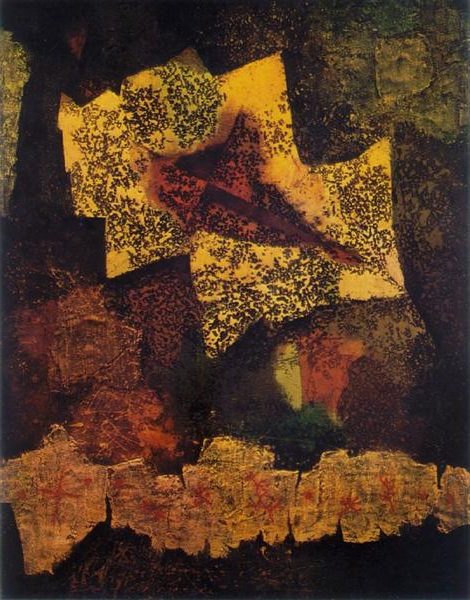
Ardon quickly became part of the local art scene. He adopted Palestinian citizenship and changed his name from Max Bronstein to Mordecai Ardon. This name change reflected his new identity in his new home.
In Palestine, Ardon continued to develop his artistic style. He blended his Bauhaus training with Jewish and Middle Eastern influences. This unique mix helped him become one of Israel’s most important painters.
Artistic Achievements and Style
Mordecai Ardon created a unique painting style that blended abstract and expressionist elements with traditional techniques. His work explored Jewish mysticism, cosmic themes, and the rich cultural heritage of Israel.
Development of Painting Style
Ardon’s style evolved from his training at the Bauhaus and his study of Old Masters like Rembrandt. He mixed modern abstract forms with classical painting methods. This blend gave his work a deep, rich color palette.
Ardon used symbolism from Kabbalah and Jewish mysticism in his art. He often painted abstract shapes that hinted at cosmic and spiritual ideas. His style became more abstract over time, but always kept a link to recognizable forms and themes.
Major Works and Exhibitions
Ardon gained fame for his large triptychs. These three-panel paintings dealt with big themes like war, peace, and Jewish history. His work “Missa Dura” (1958-1960) is a prime example. It hangs in the Israel Museum.
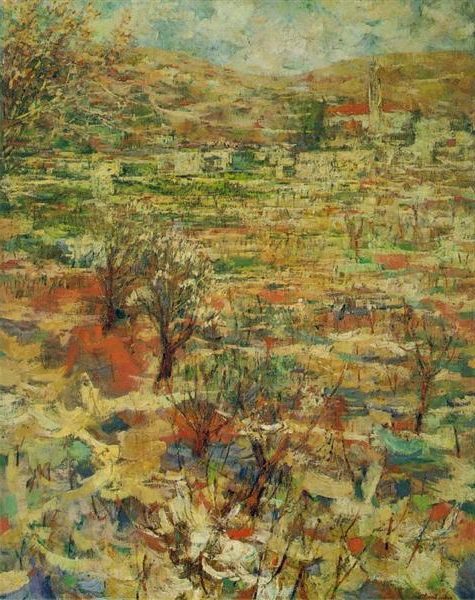
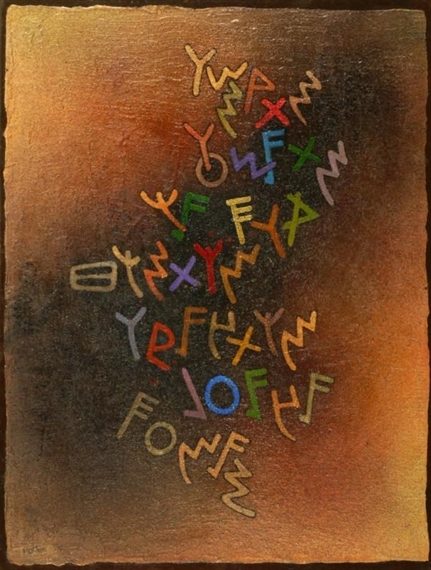
Ardon showed his art at major venues worldwide. He represented Israel at the Venice Biennale in 1954 and 1964. The Stedelijk Museum in Amsterdam held a big show of his work in 1961. These exhibitions helped make Ardon known as a leading Israeli artist.
Ardon Windows at the National Library
In 1984, Ardon finished his most famous public work: the Ardon Windows. This huge stained glass installation graces the National Library of Israel in Jerusalem. It’s made up of five large windows.
The windows show Ardon’s signature style. They mix abstract forms with Jewish symbols and Hebrew letters. The colors are bright and eye-catching. This artwork sums up many themes from Ardon’s career. It stands as a lasting tribute to his artistic vision.
Legacy and Cultural Impact
Mordecai Ardon left a lasting mark on Israeli art. His unique style and influential teaching shaped generations of artists.
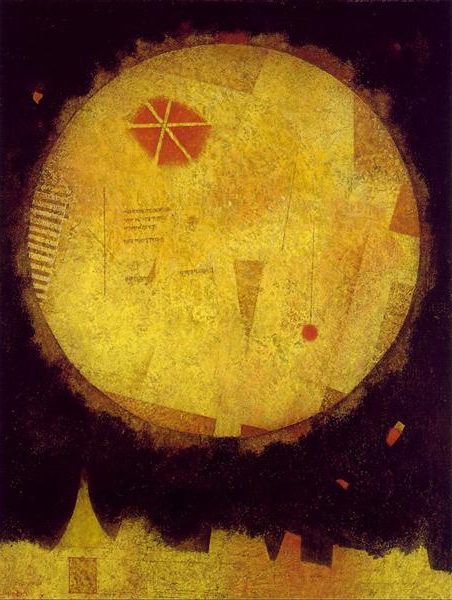

Contributions to Israeli Art Scene
Ardon played a key role in developing Israel’s art world. He led the Bezalel Academy of Arts and Design in Jerusalem for many years. As director, he updated the curriculum and brought new ideas to Israeli art education. Ardon also served as Director of Art Studies at the Ministry of Education and Culture.
In this role, he helped shape art programs across Israel. His paintings blended modern styles with Jewish themes and local imagery. Works like “At the Gates of Jerusalem” and “Gates of Light” became iconic in Israeli art. Ardon’s art often dealt with big topics like the Holocaust, mixing deep meaning with striking visuals.
Recognition and Awards
Ardon gained fame in Israel and around the world. He won the Israel Prize, the country’s top honor, in 1963. Many called him “Israel’s Greatest Painter.” His works sold for high prices at major auction houses like Sotheby’s and Christie’s.
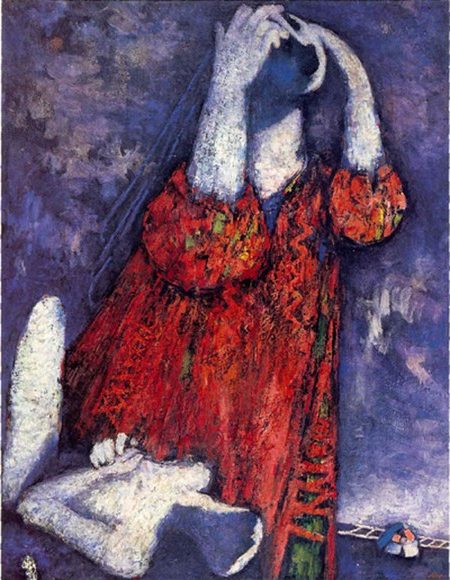

Ardon had shows in top museums in Israel, Europe, and the U.S. His art is still valued today for its mix of skill and depth. Ardon’s paintings hang in major collections worldwide. His impact on Israeli art continues long after his death in 1992.
Frequently Asked Questions
Mordecai Ardon’s painting style and influences shaped his unique artistic vision. His work blended elements from his European training with Jewish mysticism and Israeli culture.
What are the signature elements of Mordecai Ardon’s painting style?
Ardon’s paintings featured jewel-like, bright colors and skilled brushwork. He created semi-abstract works with symbolic imagery.
His style mixed modernist techniques with traditional Jewish themes. Ardon often used layered, transparent forms to create depth and mystery in his compositions.
Can you describe the influence of Kabbalah in Ardon’s artwork?
Kabbalah, Jewish mysticism, played a big role in Ardon’s art. He used Kabbalistic symbols and concepts in many paintings.
Ardon explored ideas like the Tree of Life and Hebrew letters in his work. These mystical elements added deep meaning to his abstract forms.
How did Mordecai Ardon contribute to the development of Israeli art?
Ardon helped shape modern Israeli art as both a painter and teacher. He was a key figure in bringing European modernism to Israel.
As director of the Bezalel Academy, he trained many young Israeli artists. Ardon’s work blended international styles with local themes and Jewish culture.
What was the impact of European Expressionism on Ardon’s work?
European Expressionism greatly influenced Ardon’s painting style. He studied with Expressionist masters at the Bauhaus school in Germany.
This training showed in Ardon’s use of bold colors and emotional, spiritual themes. He adapted Expressionist techniques to explore Jewish and Israeli subjects.
Could you list some of Mordecai Ardon’s most famous paintings?
Some of Ardon’s well-known works include:
- “The Awakening”
- “Gates of Light”
- “Sarah”
- “At the Gates of Jerusalem”
- “Hiroshima”
These paintings show his range from biblical themes to modern events.
In what ways did Ardon’s early education at the Bauhaus school shape his artistic evolution?
Ardon’s time at the Bauhaus had a lasting impact on his art. He learned from famous teachers like Paul Klee and Wassily Kandinsky.
The Bauhaus focus on color theory and abstraction stayed with Ardon throughout his career. He combined these modern ideas with his own cultural background to create a unique style.

